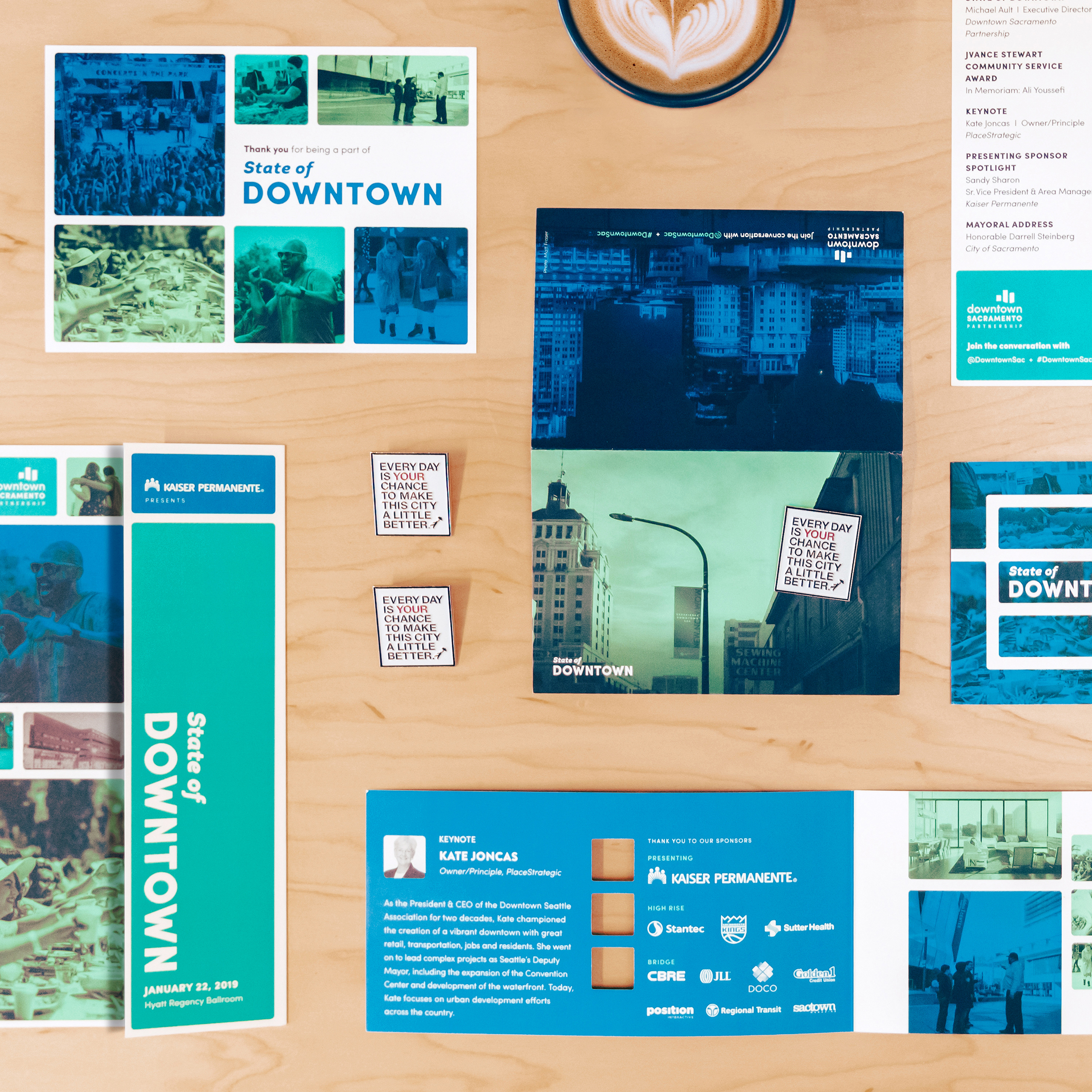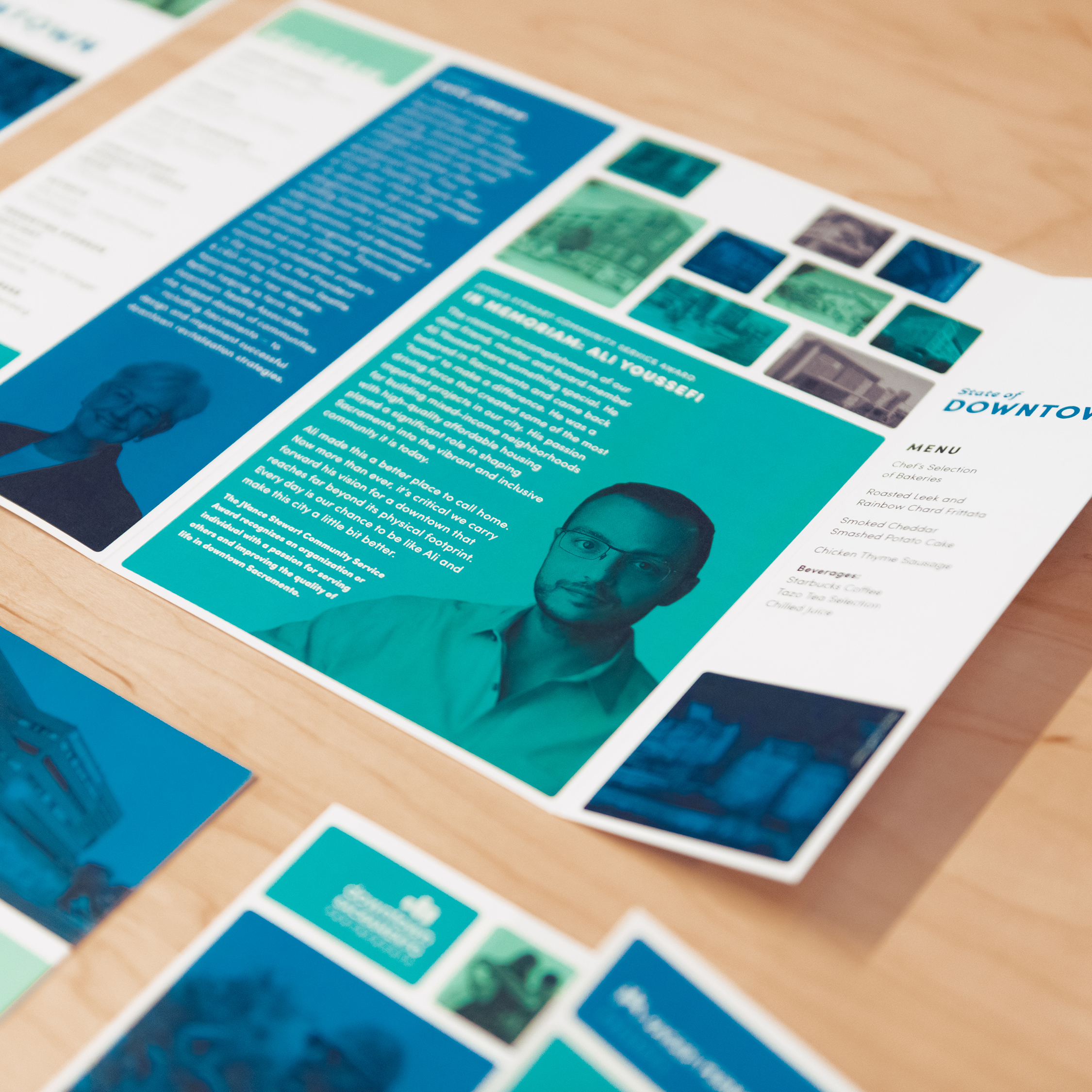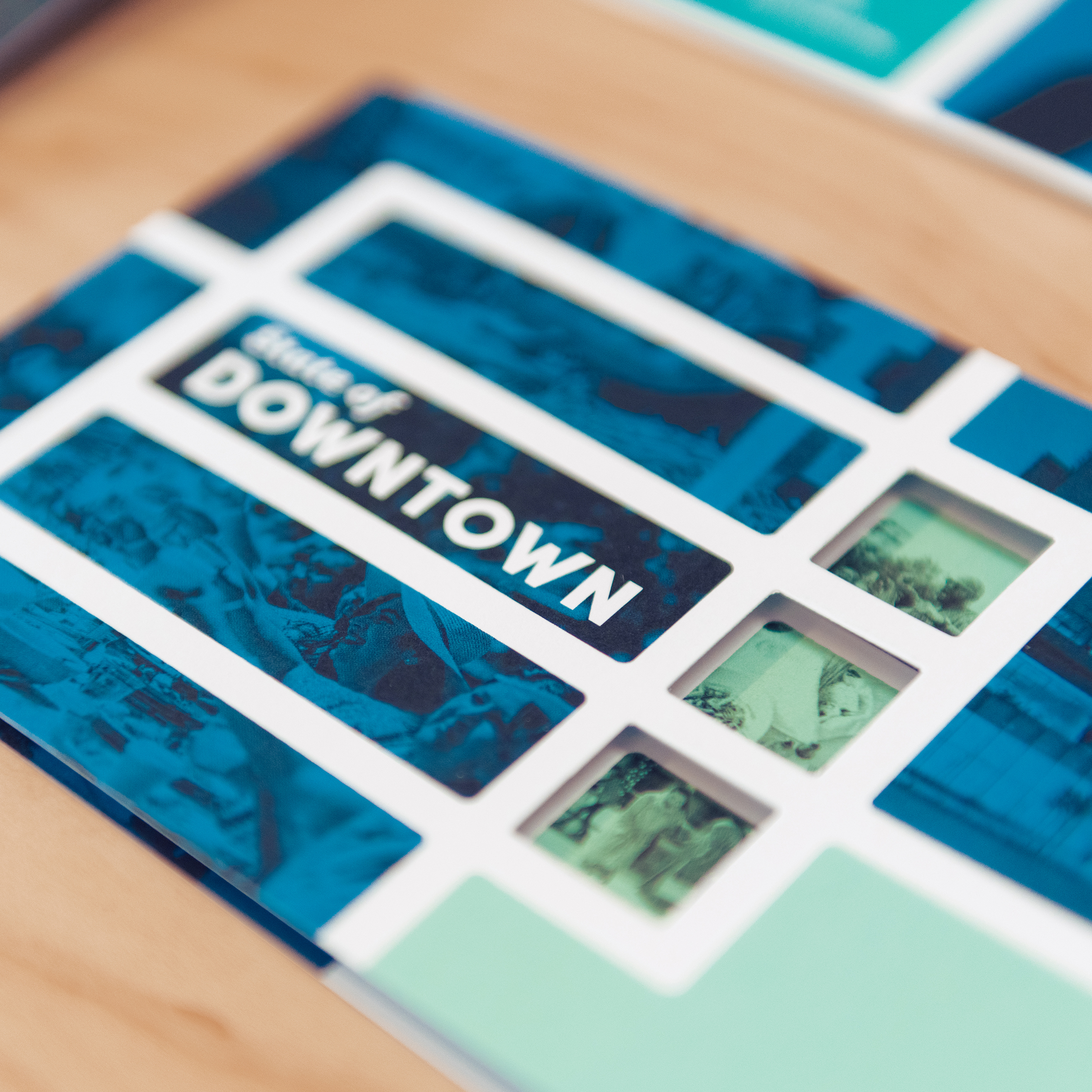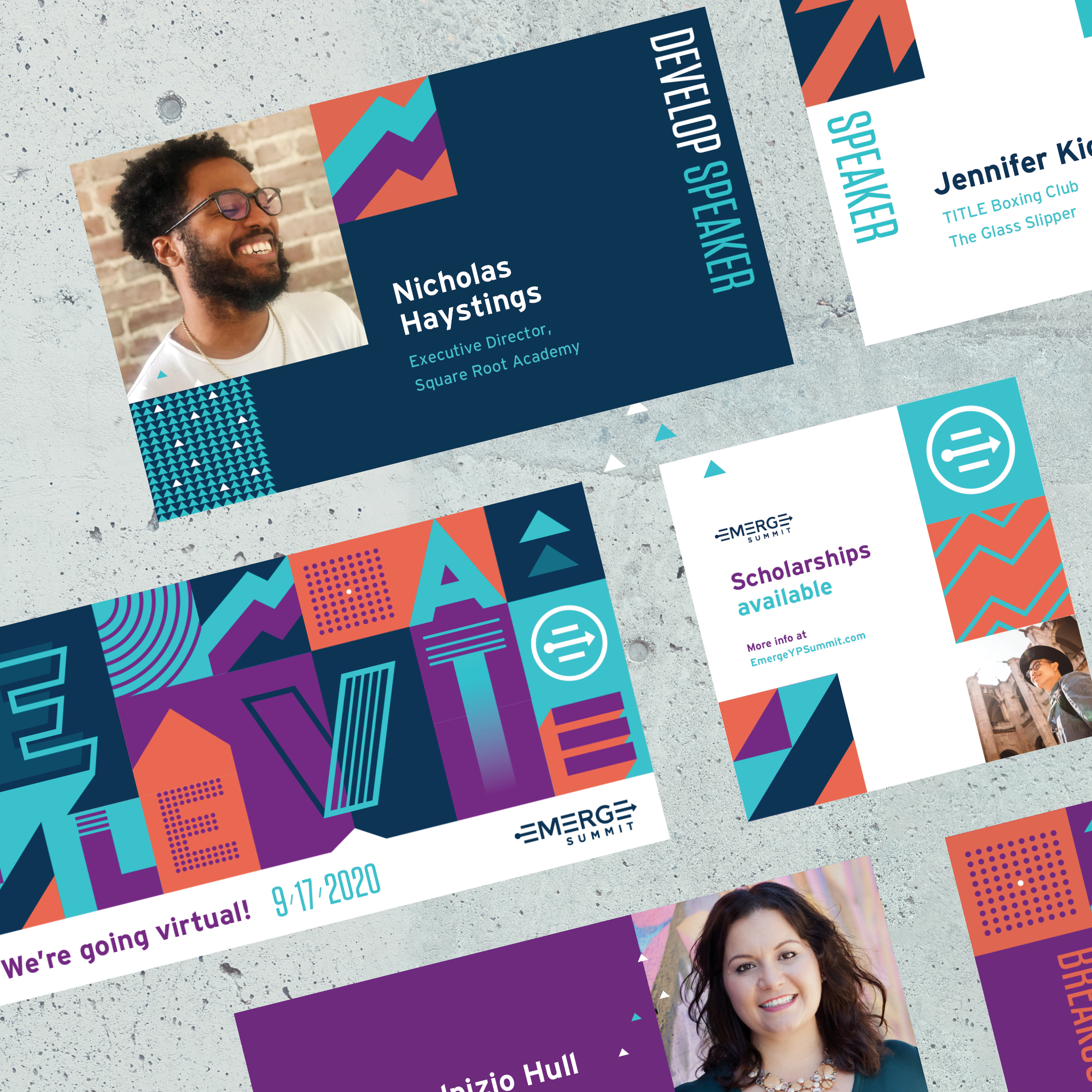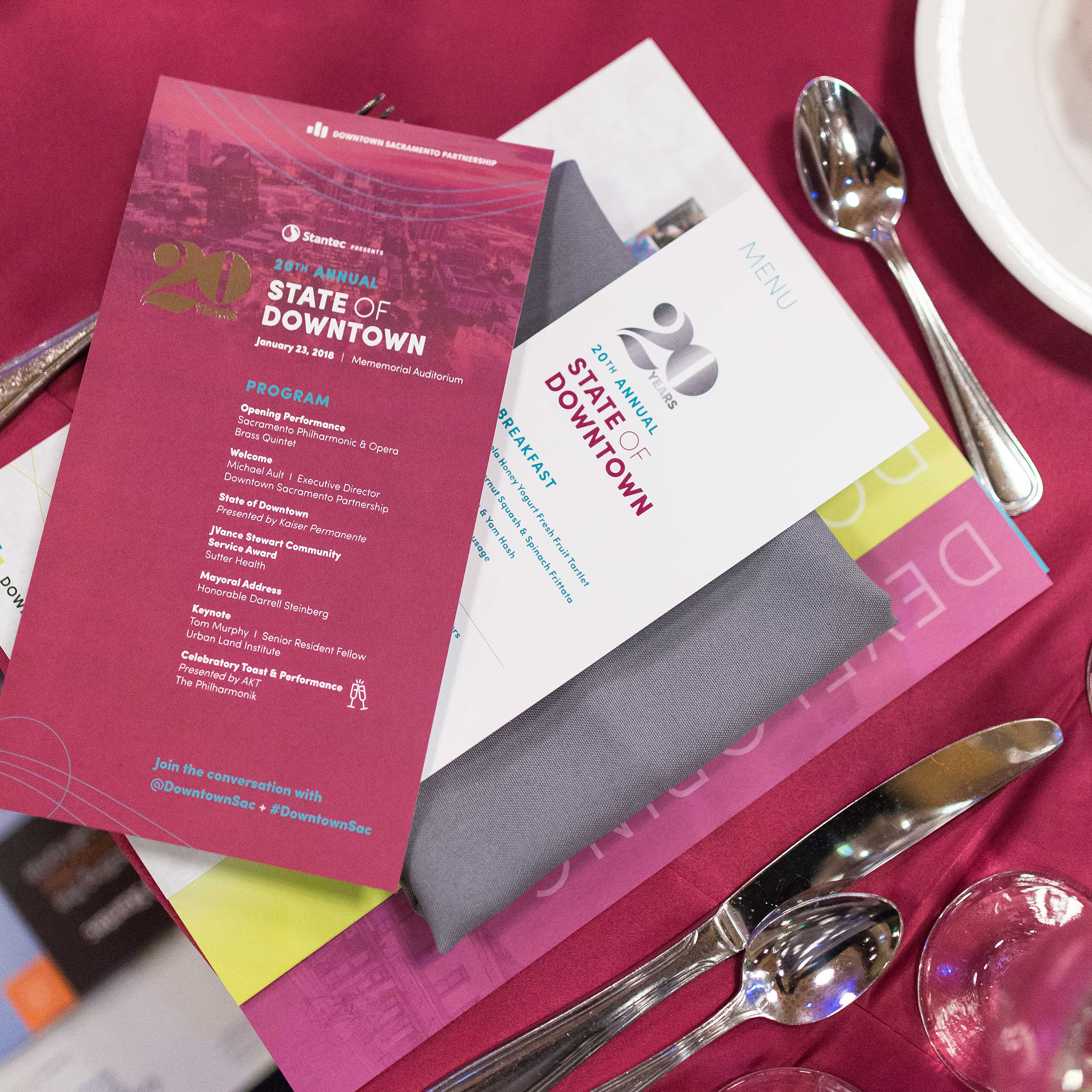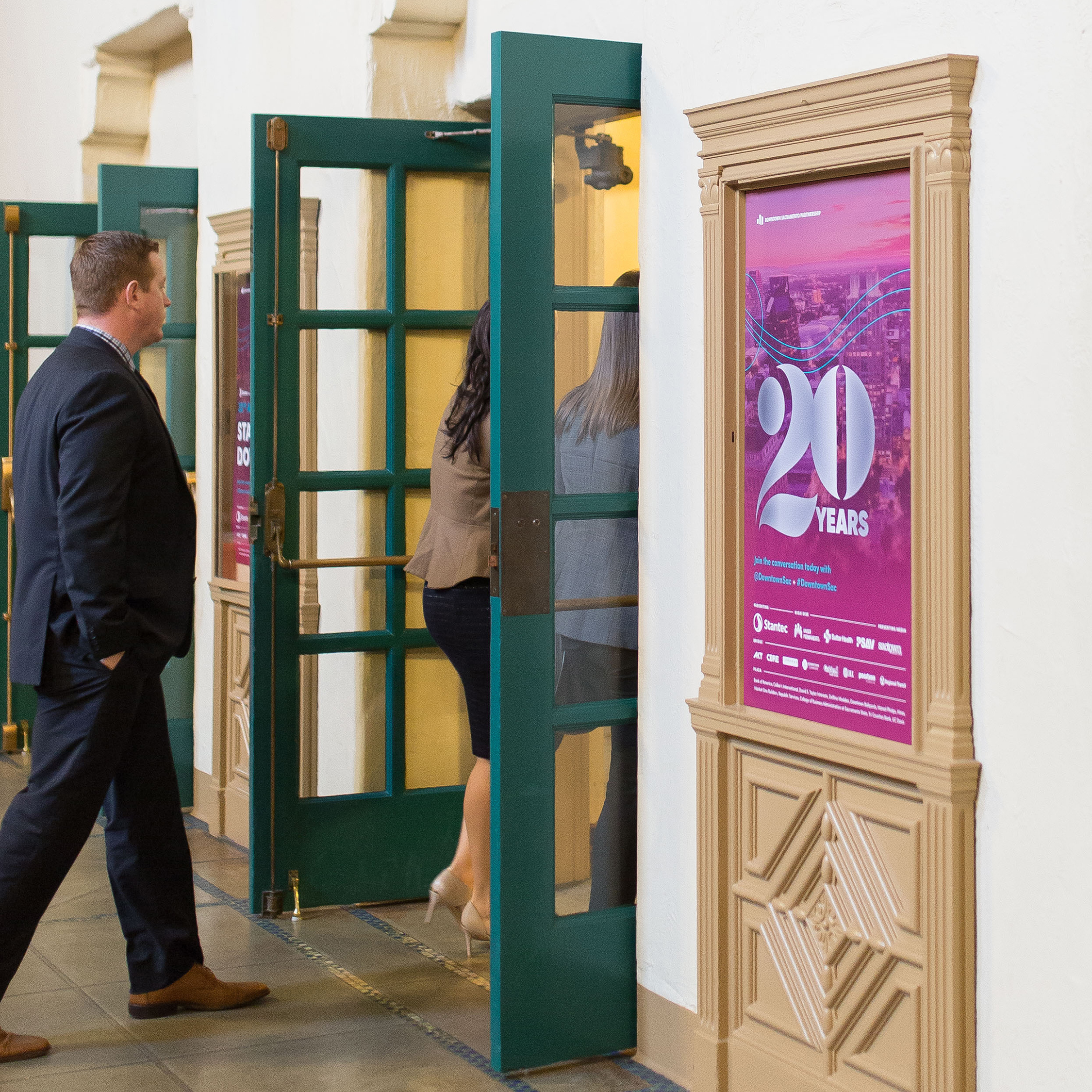In-House, Freelance, or Agency? Find the Right Choice for Your Organization’s Design Needs
As you plan for the future of your marketing department, design expertise is always near the top of your list. But design expertise comes at a cost, and your organization’s budget is always under pressure. What is the best way to decide how to resource the right talent for the marketing efforts in your plan?
Ultimately, the answer comes down to your organization’s needs—and the most effective choice for addressing them.
3 Options for Meeting Your Organization’s Design Needs
Your organization will always have design needs. When deciding how to meet them you have the following options:
1. Hiring an In-House Designer to Support Marketing Initiatives
In terms of providing dedicated expertise, hiring a new full-time designer has a number of clear advantages. An in-house designer will be primarily focused on what you assign them, and you have the most control over how their work is prioritized.
Hiring a new team member is the best option when you’re facing a consistent volume of marketing projects that will justify this role and its expenses. A dedicated full-time designer offers the additional advantage of bringing on an individual who will grow to fully understand the needs of your organization and how it functions.
Disadvantages of Hiring a Full-time Designer
Hiring a full-time designer may be a fixed expense but isn’t cheap. Along with accounting for salary, benefits, equipment, and ongoing training and education, you also need to factor in the inherent challenges of the job market for designers.
Top-tier design talent typically gravitates to design agencies that offer a wide variety of clients and projects, plus a team of other creatives to learn from and collaborate with. Because of this, designers will often take a lower salary to work in an agency environment rather than an in-house position at an association. As a result, if you want to hire a skilled designer, they won’t come cheap.
Another challenge of in-house talent is that they rarely get the opportunity to develop deep skillsets. In-house designers often get bogged down with endless small to mid-sized tasks and lose the capacity for bigger projects. Without a creative director to push a designer’s creativity, their work can easily plateau. An in-house designer must be very self-motivated to push themselves to perform at a high level consistently.
As an in-house designer grows immersed in your organization’s internal politics and motivations, they gain deep knowledge about your organization but can lose the perspective to think big. You need to ensure the talent that supports your marketing is in a position to consistently deliver standout creative solutions that will keep your organization moving forward.
2. Hiring a Freelance Designer
Bringing on an individual freelance designer constitutes the middle ground of your three options. A freelancer avoids the additional overhead of bringing on a full-time employee, and it allows your organization to temporarily add valuable skillsets.
A freelancer is ideal when your marketing team has multiple projects in the works but not enough consistent design work to justify a full-time employee. They can be a quick, flexible, cost-effective option.
Drawbacks to Working with Freelance Designers
The freelance market is full of experienced designers who can take on your organization’s next project. However, you get what you pay for in terms of skill level, availability, and responsiveness. The most talented designers are not only expensive but are also in demand and often hard to reach.
A less-experienced designer may be cheaper, but they may lack the skill set your organization needs. Freelancers don’t have project managers or other support staff so you’re often at the mercy of their schedule, workflow, and other priorities.
A freelancer offers you the flexibility to complete your marketing projects, but that flexibility goes both ways. If you need a project delivered by a specific date, a freelancer may be tied up with a full-time job or other clients when you need them most.
3. Contracting With a Dedicated Design Agency
Even if your in-house design team can support your organization’s day-to-day marketing priorities, some projects require additional expertise. Higher stakes and time-intensive projects such as big events or transformative initiatives such as branding and website redesigns strain any organization’s resources and push the limits of their skill sets. That’s where an outside agency offers crucial advantages.
Agencies offer an outside perspective that no in-house designer is equipped to deliver. They don’t have pre-existing relationships with stakeholders, and they aren’t tied to internal politics, history, or biases that inhibit new ideas. They have decades of experience helping clients like you. With access to multi-disciplinary teams, they can create and manage everything your project needs and deliver these items on time.
When you hire a specialist agency they have solved your problem many times, in many different ways. They have built a creative team full of individuals who bring different talents and experiences to the table. You didn’t have to hire them, train them, or manage these unconventional employees. You get to hire them to drop in and solve your problem.
Downsides to Partnering With an Outside Agency
Agencies are nimble and scalable. They have access to a broad rolodex of talent to serve your needs, including designers, strategists, writers, and developers. But all that expertise and reliability costs money.
One-off smaller design jobs aren’t cost-effective for an agency to produce and are often beyond the scope of the services they provide. If your organization has a limited budget, you should work with an agency for only your biggest, most important projects.
It can also be challenging to identify the right agency to work with. Especially if you’ve had a bad relationship in the past. When selecting an agency we suggest a QBS process over the older RFP model.
The Ideal Mix: Partnering With an Agency for a Hybrid Approach
Combining an in-house designer with an outside agency offers the best of both worlds. When you use a staff designer, these individuals can handle the day-to-day demands of your marketing department. Then, for larger projects, you can turn to an agency to provide the outside perspective combined with the advanced skills and experience you need.
An outside agency offers a boost of creative horsepower. To stay competitive, they have to remain informed of the latest design trends and technologies. Plus, they offer a critical perspective that will challenge “the way we’ve always done it” and find real solutions to your marketing needs.If this sounds like a relationship that will benefit your member-driven organization, we should talk. We’ll make sure your next project has the right talent on hand to create the results you need.
9 Problems Brand Systems Fix
How a Custom WordPress Site Gives Your Association Superpowers
Today, the bulk of what you see on the Internet runs on WordPress. Over 40% of all websites are built on the platform, and 65% of all websites that run on a CMS use WordPress to support their digital publishing. As you consider what your association website needs to be successful, WordPress casts a long shadow over every other option.
Frankly, there’s a reason for that. WordPress is a powerful and flexible platform that supports an array of custom plugins and third-party integrations. When utilized properly, WordPress allows organizations like yours to implement whatever website functionality your members need.
By working with the dominant open source CMS in the marketplace, you can be assured that future needs ranging from software updates to development resources are easy to procure. Plus, when you take the extra steps to customize the backend interface, you can ensure your site editors will publish timely updates with a streamlined experience that protects your brand.
With the help of the right digital agency, your WordPress site will empower both your association and your members right now — and far into the future.

5 Advantages of a WordPress Association Website
1. WordPress is Expandable and Flexible
With a proprietary CMS, you’re at the mercy of the product’s parent company to introduce improvements or respond to security or feature requests. The popularity of WordPress has led to a large community of developers which means improvements and new functionality is released more regularly. And with complete access to the source code, you’re able to expand its functionality as you see fit with virtually no limits.
2. Editing in WordPress is a User-Friendly Experience
Out of the box, the WordPress admin interface is easy to navigate. Content editing is intuitive, and the platform allows you to preview your changes before publication. For the most part, the editing interface follows norms from word processing software, which allows more people on your team to learn to manage your site with a lower barrier to entry.
Already designed to eliminate the need for your site editors to understand code, the WordPress CMS grew more simplified in 2018 with the block editor, known as Gutenberg. The block editor allows your teams to easily edit and rearrange custom elements on any page. Page layout changes that once required technical expertise can be done with a click, while protecting the integrity of your brand.
When you work with an agency like ours, we customize the interface to suit your needs even further. When your teams need to make changes, they see only the editing tools and functionality they need — and none of what they don’t.
3. WordPress is Powered by an Active Open Source Community
WordPress is an open source platform, which means developers can access the platform’s source code to expand its capabilities. Just as importantly, your organization also benefits from an active community keeping the platform up-to-date.
WordPress is so ubiquitous, it benefits from a huge population of developers working to resolve bugs or create new features and plugins. The platform also has a dedicated security team of developers and researchers working to discover and resolve any detected vulnerabilities.
When you use a proprietary CMS, your organization is at the mercy of the parent company’s development schedule for new feature releases. By contrast, the WordPress community ensures the platform remains in a state of constant improvement. On average, WordPress releases two new updates per month. And with an open source platform, you have complete access to the source code, so you can create any custom features you need.
4. WordPress is Scalable
WordPress is flexible enough to handle sites ranging from small businesses to corporate giants. The core technologies within WordPress have been proven over time, which means your developers don’t need to reinvent the wheel when it comes time to setting up the server infrastructure. However far-reaching your organization’s goals may be, WordPress will be able to take your site there.
5. WordPress is SEO-Friendly
When you’re managing large amounts of content for your organization’s site, you need a platform that integrates SEO from the beginning. If your site isn’t visible to search engines, it’s effectively invisible to your new and prospective members. WordPress incorporates best practices that are ranked highly by search engine algorithms. Plus, WordPress supports plugin tools like Yoast that ensure your content conforms with requirements to boost search engine rankings.

WordPress Integrations Connect Your Association’s Website with Vital Tools
WordPress is flexible enough to be customized to support whatever design and functionality your association website needs. That flexibility is best reflected with how well WordPress integrates with third-party platforms to expand your site’s capabilities with external data or functionality.
Of all of the advantages WordPress offers, one of the greatest stems from its overall popularity. Whenever a software service provider creates an application, it’s always in their best interest to provide a plugin that integrates their system with WordPress because it connects them to millions of potential customers. Same can’t be said for less popular platforms, as you’ll have to either wait and hope for someone to build an integration that you can license, or spend lots of time and money yourself creating the integration.
And when an integration doesn’t already exist, WordPress allows us to create custom integrations for you with most modern systems and data sources. Whether you work with a tool like MemberSuite, here are just a few examples of how WordPress integrations create a richer website experience for members:
- Event calendar and management: Use an API integration to pull your organization’s events from an AMS into WordPress to create a centralized and user-friendly calendar.
- Directory management: Draw member information from your AMS to create an interactive directory searchable by location or other details. If you need to display information for specific committees, we can design your site to display those too.
- Member management: Remove the need for multiple login points and create a single-sign-on integration with your AMS to give different levels of access to your website to staff, members, committees and even the board.
WordPress is so extendable that your site can sync with multiple data sources to further build community and increase engagement among your members. You just need to work with the right partner to bring all the pieces together.

How to Customize WordPress to Suit Your Association’s Needs
WordPress is the dominant website platform. But not all WordPress sites are created equal. You need a website that’s consistent with your brand, cohesive with the rest of your organization, and simple enough to manage that your team can easily edit and publish new content.
Due to its popularity, you can find a countless number of low cost and off-the-shelf themes and templates that may appear to suit your needs. But these templates are built as broadly as possible to serve the needs of as many organizations as possible. That comes with many disadvantages. You’ll never find a theme that’s designed to solve your specific challenges, communicate effectively with your unique audiences, or one that sets you apart from your competition. In addition, it will include hundreds of features your organization will never use. These elements will leave you with a site that’s more confusing to edit and manage, and unnecessary bloat that can slow site performance and drag down search engine rankings.
WordPress offers a variety of ways to create a website customized for your organization, but you need to start from the ground up. When you work with Position, you can be assured that your site will be finely-tuned to accommodate what you need, no more — and no less.
Our approach to WordPress design and development delivers two benefits to your organization:
Protect Your Brand and Your Investment
Your brand communicates your organization’s mission, values, and vision, and builds trust and loyalty from your members.
An off-the-shelf template can be your brand’s worst enemy by being too flexible. It may empower your teams to build whatever they want, but the end results are detrimental to your organization. As you have multiple people working on your site, your organization soon has multiple pages designed to suit numerous needs and standards. All too quickly, your new website will degrade into a state worse than before.
A site that degrades over time isn’t just a bad investment; it creates an overall negative impact on your organization’s brand.
On the other hand, a custom WordPress site built in accordance with your brand, goals, and best practices, leaves your organization better positioned for the future. At Position, we build sites that create a separation between design, functionality, and content, which protects your brand while giving your team just the right amount of flexibility to edit and manage your content.
Empower Teams with an Intuitive Editing Experience
At Position, we build systems that are designed to make your life easier. A customized, ground-up approach to your organization’s site doesn’t just create an admin interface for site editors that’s intuitive and easy-to-manage. It also will provide guardrails that protect your site’s design, aesthetic, and performance in the long run.
Your organization moves at the speed of light, and you need a site that enables your team to be responsive to your needs. When you need a last-minute landing page to support an upcoming event, your teams will be empowered to create what you need without having to reach out to anyone for help.
When you need a new website, the end results are simply too valuable not to protect. When you’re working with the right agency, those protections will already be in place.

Don’t Let Your Site Be a Jack-of-all-Trades and Master of None
You need a website that perfectly serves the specific needs of your association and your members (and next generation of members). And you don’t have to figure it out on your own.
Let’s talk about building a custom WordPress website that makes an impact — now and for years to come.
How Event Branding Boosts Attendance, Sponsorship Dollars — and Your Organization’s Profile
As you approach the deadlines for your organization’s annual event, the pressure only grows. After all, no matter whether you’re set to stage a gala, fundraiser, or convention for members, the gathering provides a crucial connection with your most valuable audience.
If you host events for your members, you know attendance and sponsorship numbers from those events have a significant effect on your bottom line. Each event presents an opportunity to energize or even expand membership and increase revenue. To unlock your event’s real potential, you need to incorporate clear, consistent branding and an elevated design.
Events present a chance to create a physical extension of who you are as a brand. When executed properly, event branding delivers an experience that engages members while elevating the value and perception of your organization.
What Do We Mean by Elevated Event Branding and Design?
Branding your event requires more than a color scheme and clever theme. Any association can create collateral pulled from a few standard design templates and hope for the best. But how do you take an event to the next level?
Put simply: you create an event experience that’s smart and elevated. When we say smart, what we mean is that your event’s design is inspired by strategic decisions rather than arbitrary preferences. Each detail and design element you choose to incorporate into your event should be there because it reinforces the goals of your organization.
However, an elevated event experience doesn’t only communicate all the right things to embody your brand’s position. It can also inspire your members with a cohesive visual presentation and create a positive connection with your brand.
Think of what happens when you dine at a high-end restaurant. From the moment you check in with the host all the way up through dessert, your experience has been curated to communicate a message about where you are. Your event should provide the same elevated, consistent experience for your members.
Successful Events Rely on a Unified Purpose and Vision
From the earliest stages of marketing to the moment members leave the venue, the most successful events deliver an experience consistent with their brand. They are planned around a distinct set of goals. Every element of the event reflects a unified narrative and central purpose that serves the organization.
For example, if one of the goals of your event is to encourage renewals, then a well-branded event provides an opportunity to boost enthusiasm for members. If they feel energized and engaged by an event that’s elevated, cohesive, and exceeds expectations, they’re more likely to attend more events. And event attendance is a key element of member retention.
Any event is a two-part experience: The pre-event marketing and the in-person experience. Months beforehand, your communications should set the tone by providing a consistent journey from the save-the-date announcement through ongoing marketing. At the event each interaction with your members is a moment that adds to or detracts from the overall experience.
A successfully branded event comes down to bringing three elements into alignment:
- Quality of production: Is everyone on the team, from AV to the event planner, working together to maximize the attendee experience around the same goals? In our experience, collaboration and synergy can quickly take an event from good to great.
- Quality of content: Is your program and its messaging consistent with the event’s purpose and your organization’s goals? Relevant and valuable content is the backbone of a successful event.
- The marketing and visual experience: Is every visual element leading up to and during your event communicating a clear message that’s right for your brand? Up until they walk in the door, this is all attendees and sponsors have to judge your event by.
At Position, we align each of the elements above by collaborating with your team and event planners to ensure all aspects of your conference or gala reinforce your brand’s story. By shaping all the details into a cohesive whole, your organization delivers a more engaging experience for the audience who matters most.
Successful Event Branding Is an Extension of Your Organization
Organizations like yours host events for a number of reasons. Bringing your members together can provide real educational or inspirational value, convert attendees to members, and increase revenue through additional sponsorship. With the help of the right partners, your events can become game-changing assets for your organization.
When Associated General Contractors of California wanted to breathe new life into their organization and events, we helped them evolve their 100 year old brand and reimagine their industry conference. With AGC’s new strategic branding in place for its events, the organization increased attendance for CONSTRUCT 2021 by 31% and sponsorships for their Gala by 300%.
Your ability to deliver an experience that serves your organization’s goals is a complicated, high-stakes undertaking. You shouldn’t have to navigate all the details on your own.
How to Know Your Event Needs a More Thoughtful Approach to Branding
A conference that acts as an extension of your brand reinforces the value of belonging to your organization. The equity you gain from a successful event constitutes something of a loop.
The more engaging experience your members have, the more likely they are to attend the following year and renew their membership. As member attendance and engagement grows, so do sponsorship dollars.
Your event branding should add to the overall perception of your brand among your members and in the marketplace. But knowing whether the time is right to take your event to the next level depends on your organization. If attendance has been lagging, sponsorships have been flat, or you want to unlock untapped potential, it’s time to create a more engaging experience that’s aligned with your brand. If you’re ready to create a flagship event for your organization, we should talk.
Can an RFP Get Your Organization What It Really Needs? Or Just What You Ask For?
Many associations default to writing a request for proposal (RFP) when it comes to choosing a professional firm to help them rebrand their organization or redesign their website. And while it’s easy to assume RFPs are the way to get the job done fairly, effectively, and economically, this assumption tends to reduce a complex problem down to a simple matter of where to get the best deal like you would when buying a car.
The reality is that when you’re ready to buy a car, you start by evaluating your needs (car features and benefits) and then your constraints (your budget). Eventually you find the best option and then a dealer offering the best price. Then, you buy that car.
But it’s not that straightforward when it comes to complex, high dollar value, and customized solutions. When you rebrand an organization or redesign a website, you need to do much more than search for the firm with the lowest price. You’re looking for a firm that has solved the same problems as you’re facing in your industry. Working with a firm means entrusting them to correctly diagnose the source of your problem areas, and have the experience and expertise to solve those problems in your industry.
RFPs aren’t the only way to select a firm to do your long-awaited rebranding or website project. The RFP process doesn’t typically lead to the best qualified expert, solution, or even the best value. There’s a better way. When you use qualifications based selection (QBS), you’ll get a fairly-priced, customized solution from a true expert.
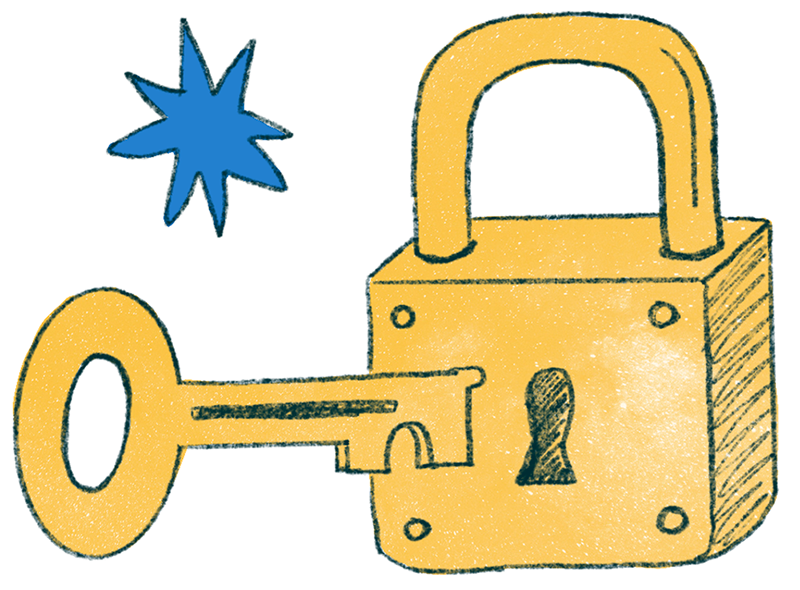
RFPs Have Their Place — But Not For Complex and Customized Solutions
RFPs do work in cut-and-dry scenarios when:
- You don’t need an industry expert to help you understand the problem or the real cause of it.
- You don’t need a conversation with firms to make sure they fully understand your association and its challenges, diagnose the source of them, before proposing the correct custom solution.
- The lowest price is all that matters to you. The RFP process identifies which firm will provide the best perceived value — not which firm will provide the most innovative, valuable solution, at a fair price.
- Opportunity cost is not a concern. If you truly know the source of the problem, and the deliverables are simple and identifiable. You’re not worried that you could have missed a major insight or opportunity and spent your valuable resources on the wrong (or half baked) solution.
When your association takes on a rebrand or a website redesign, you’re attending to a critical part of successfully moving your member-driven organization into the future — not a simple, cut-and-dry issue like the above criteria would cater to. Again, in order for the RFP process to work, you need an accurate self-diagnosis. But what happens when you take on writing an RFP and incorrectly define the source of the problem?
It’s not only writing the RFP that’s a challenge. It’s also identifying an expert vendor. Naturally, vendors who respond to an RFP will want to win the project. They’ll make promises based on your prescribed requests for the lowest price they can offer and bind themselves to it.
More and more expert firms won’t even bother participating in the RFP process. That’s because RFPs offer no incentive for firms to spend the extensive time necessary to research and diagnose the real cause of the problem or to generate custom and innovative solutions that best address it. After all, that would be a waste of their time and effort if and when you choose another firm.
Don’t end up selecting the wrong vendor or the wrong solution because you were lured by the lowest price or perceived value. By the time you figure out the solution you paid for is half-baked, you’ll have no budget left to start your project over. So skip the RFP and begin with QBS.
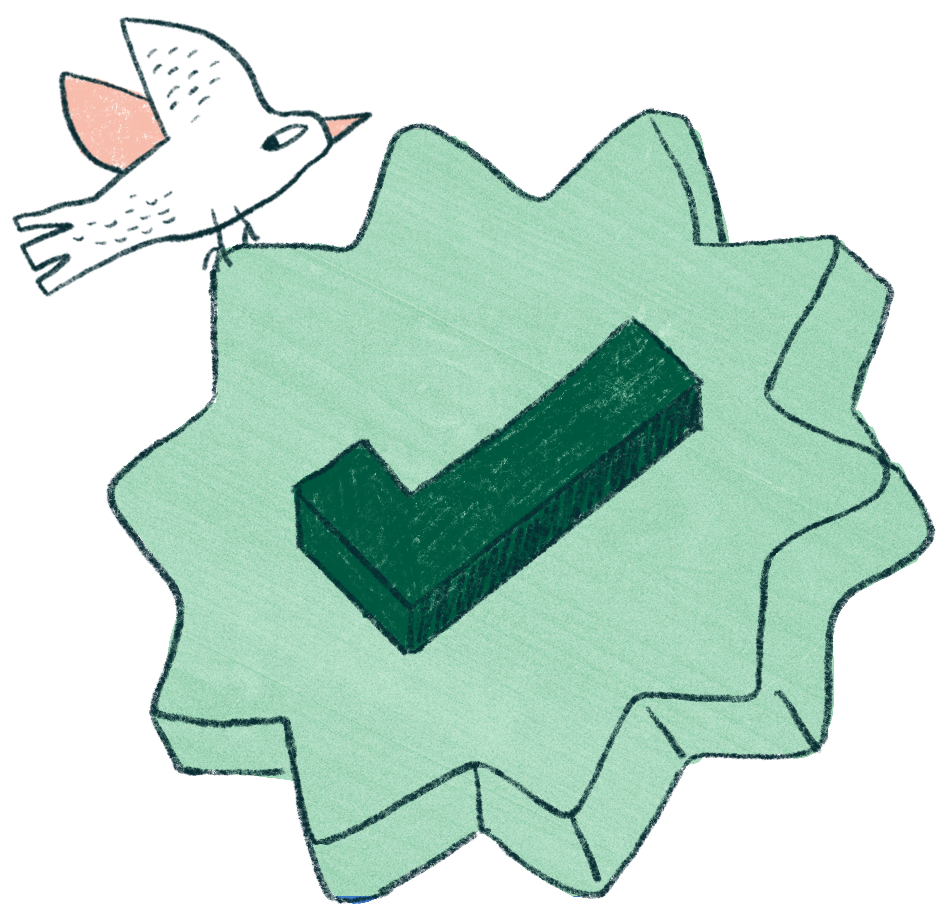
Use Qualifications Based Selection (QBS) To Get Your Association the Best Results
RFPs often don’t reflect an association’s true needs. Why? Because even those who do know the project best — and who have perhaps begged and pleaded to have it approved — are too close to the project to see all the variables. It’s easy to see the car needs fixing, but knowing what parts to replace or if you need a new car altogether? Those decisions take the know-how, experience, and eyes of an expert.
When you need expert solutions for complex problems, qualifications based selection (QBS) makes sense. The process was established by the Congress in 1972 as a method to ensure government agencies hired the most qualified architecture and engineering firms rather than the cheapest. Since then QBS has been adopted as a procurement method in the private sector as well.
The QBS process ensures:
- You can select a firm based on their competency and expertise rather than price or specific deliverables.
- The expert firm drives best value into your budget.
- Best value is measured by the quality of the solutions at a fair price.
- You’ll collaborate with the firm you choose about the best approach to your project and its scale and scope, and determine the best path forward and the appropriate deliverables to give you the desired outcome.
QBS gives you an opportunity to collaborate, to ask tough questions — and be asked tough questions. You can have conversations with the firm that builds a mutual understanding of the problem and the real cause of it, before determining the most appropriate solutions, costs, and deliverables.

3 Easy Steps to Hiring a Vendor Via QBS
It might be tempting to stick with the RFP process to select a vendor for your project. It’s human nature to choose the familiar — despite evidence that the familiar isn’t the best for the desired outcome.
You can still lean on something familiar as you begin QBS. Treat the process like you are making a new staff hire and follow these 3 steps:
- Determine the qualifications a firm must have for you to hire them. Rather than starting with an RFP, start with an “RFQ” presenting your project’s objectives to vendors offering the services you need. Don’t focus on finding a pre-defined solution or rate — look at each firm’s capabilities, approach, and their ability to communicate with your team. Be sure to confirm they have extensive experience working with similar organizations and have solved similar challenges for them.
- Shortlist the top three firms, interview them, and rank them. Review qualification responses and consider each firm’s experience, capabilities, and personnel. Spend time researching each firm’s website and their past clients, thought leadership, and results. Interview each firm about the project and rate the candidates for their understanding of the project, their approach, and how they communicate with your team.
- Start the collaborative process. Select the top firm and start the collaborative process of identifying the real source of your problems, the most optimal budget to solve them, as well as the solutions and deliverables to drive into that budget.

Your Association’s Project Deserves a Better Procurement Process
When you’re finally at the point of firm selection for your project, you should insist on one who has these two qualities:
- Industry expertise
- An understanding of your organization’s unique challenges and having solved the same challenges for other similar organizations
Aren’t you looking to hire a vendor in the first place because you don’t have the expertise yourself? Old school RFPs simply aren’t designed to help you access top industry experts.
Instead of sinking time, energy, and budget in a process that proves inefficient at best, invest in a more effective selection process. QBS springs from a firm belief that only experts should do your work and that your engagement with them should be focused and productive. It makes way for you to hire the best available firm to build your association’s custom ride — empowering you to take your members where they want to go.


